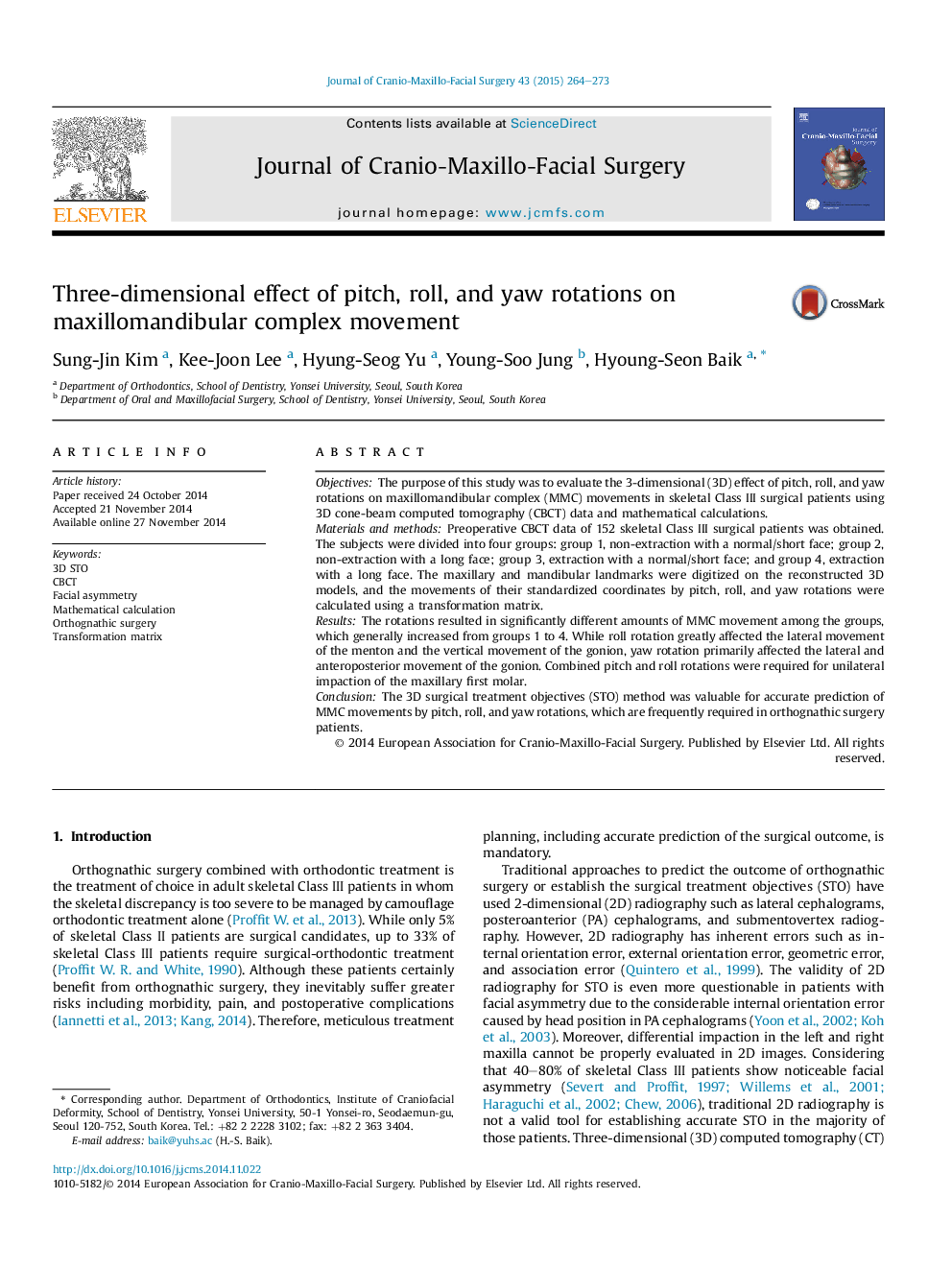| Article ID | Journal | Published Year | Pages | File Type |
|---|---|---|---|---|
| 3142692 | Journal of Cranio-Maxillofacial Surgery | 2015 | 10 Pages |
ObjectivesThe purpose of this study was to evaluate the 3-dimensional (3D) effect of pitch, roll, and yaw rotations on maxillomandibular complex (MMC) movements in skeletal Class III surgical patients using 3D cone-beam computed tomography (CBCT) data and mathematical calculations.Materials and methodsPreoperative CBCT data of 152 skeletal Class III surgical patients was obtained. The subjects were divided into four groups: group 1, non-extraction with a normal/short face; group 2, non-extraction with a long face; group 3, extraction with a normal/short face; and group 4, extraction with a long face. The maxillary and mandibular landmarks were digitized on the reconstructed 3D models, and the movements of their standardized coordinates by pitch, roll, and yaw rotations were calculated using a transformation matrix.ResultsThe rotations resulted in significantly different amounts of MMC movement among the groups, which generally increased from groups 1 to 4. While roll rotation greatly affected the lateral movement of the menton and the vertical movement of the gonion, yaw rotation primarily affected the lateral and anteroposterior movement of the gonion. Combined pitch and roll rotations were required for unilateral impaction of the maxillary first molar.ConclusionThe 3D surgical treatment objectives (STO) method was valuable for accurate prediction of MMC movements by pitch, roll, and yaw rotations, which are frequently required in orthognathic surgery patients.
